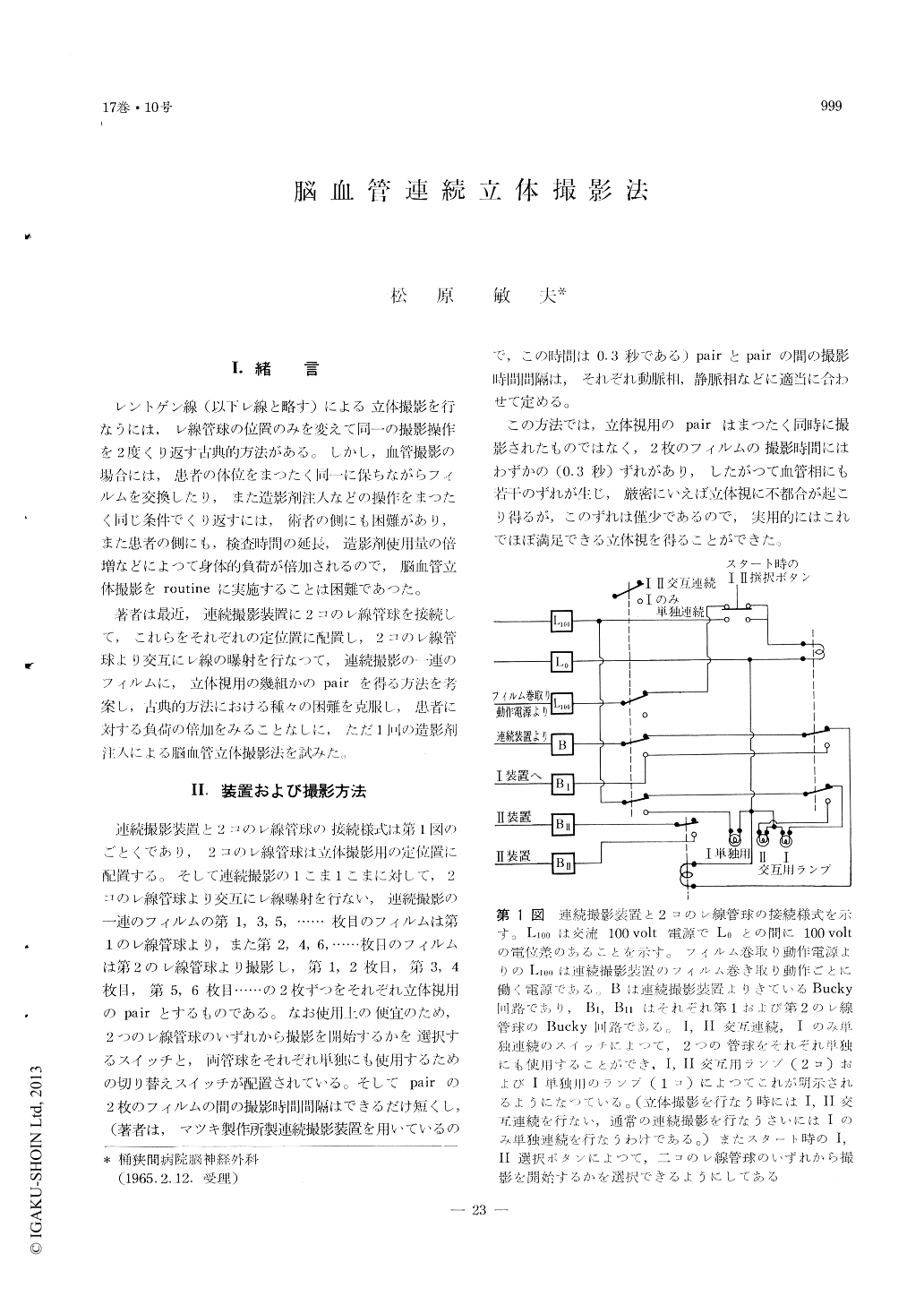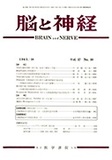Japanese
English
- 有料閲覧
- Abstract 文献概要
- 1ページ目 Look Inside
I.緒言
レントゲン線(以下レ線と略す)による立体撮影を行なうには,レ線管球の位置のみを変えて同一の撮影操作を2度くり返す古典的方法がある。しかし,血管撮影の場合には,患者の体位をまつたく同一に保ちながらフィルムを交換したり,また造影剤注入などの操作をまつたく同じ条件でくり返すには,術者の側にも困難があり,また患者の側にも,検査時間の延長,造影剤使用量の倍増などによつて身体的負荷が倍加されるので,脳血管立体撮影をroutineに実施することは困難であつた。
著者は最近,連続撮影装置に2コのレ線管球を接続して,これらをそれぞれの定位置に配置し,2コのレ線管球より交互にレ線の曝射を行なつて,連続撮影の一連のフィルムに,立体視用の幾組かのpairを得る方法を考案し,古典的方法における種々の困難を克服し,患者に対する負荷の倍加をみることなしに,ただ1回の造影剤注入による脳血管立体撮影法を試みた。
serial angiographic apparatus and twin roentgen tubes which are placed side by side at a specific distance for stereoscopic view, were connected to have "serio-STEREO-angiography" by means of usual single procedure of contrast injection. Twin roent-gen tubes were so synchronized with the serial angiographic apparatus, that every other film in the series is exposed by one of the twin tubes and the alternate films by the other of the twin tubes. In this way, film 1 and 2 are stereoscopic pair, film 3 and 4, 5 and 6, and so on are similarly stereoscopic. Strictly speaking, the pair films were exposed with some time interval (about 0.3 sec. in this apparatus), i.e., not simultaneously, however, they were prac-tically enough for stereoscopic view.
Stereoscopic observation of cerebral angiograms in cases of intracranial space taking lesion might be beneficial in neuroradiological studies, however, it would be extraordinary important in cases in which abnormal vascularities such as neoplastic, regenera-tive vessels, collateral circuits and vascular malfor-mations are visualized, as such abnormal vascularities are often difficult to study its anatomy even if biplane roentgenograms are taken. In near future, a pair of twin roentgen tubes will be synchronized with the biplane simultaneous serial angiographic apparatus to have multiple studies without multiply-ing the number of contrast injection.

Copyright © 1965, Igaku-Shoin Ltd. All rights reserved.


